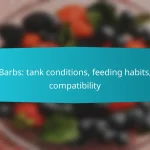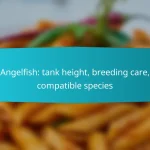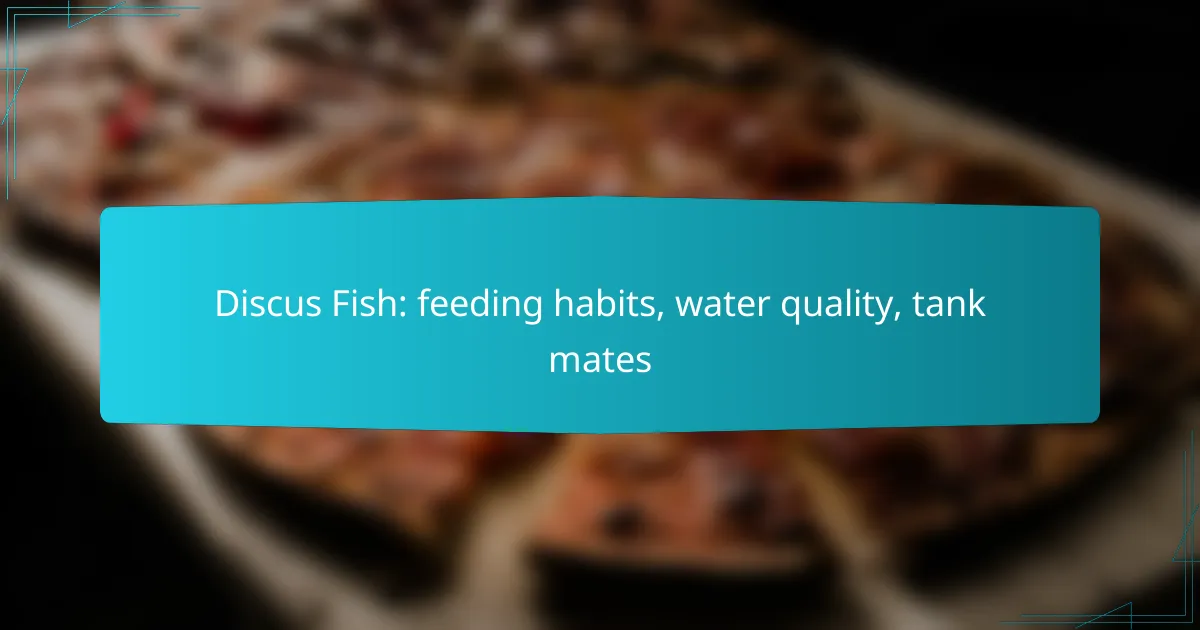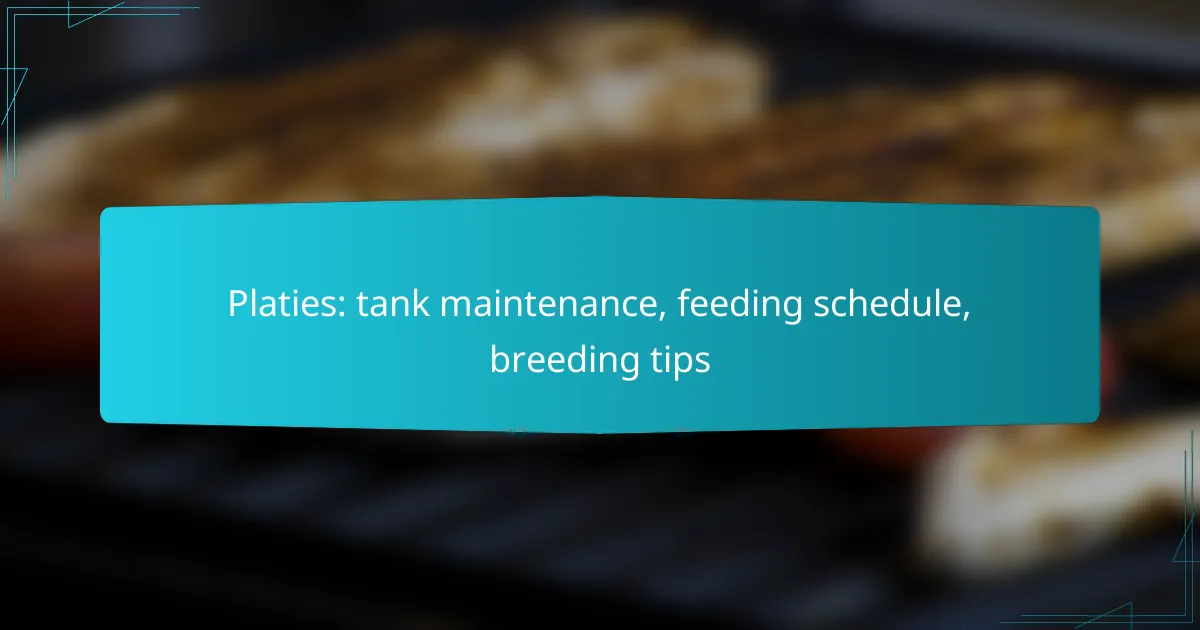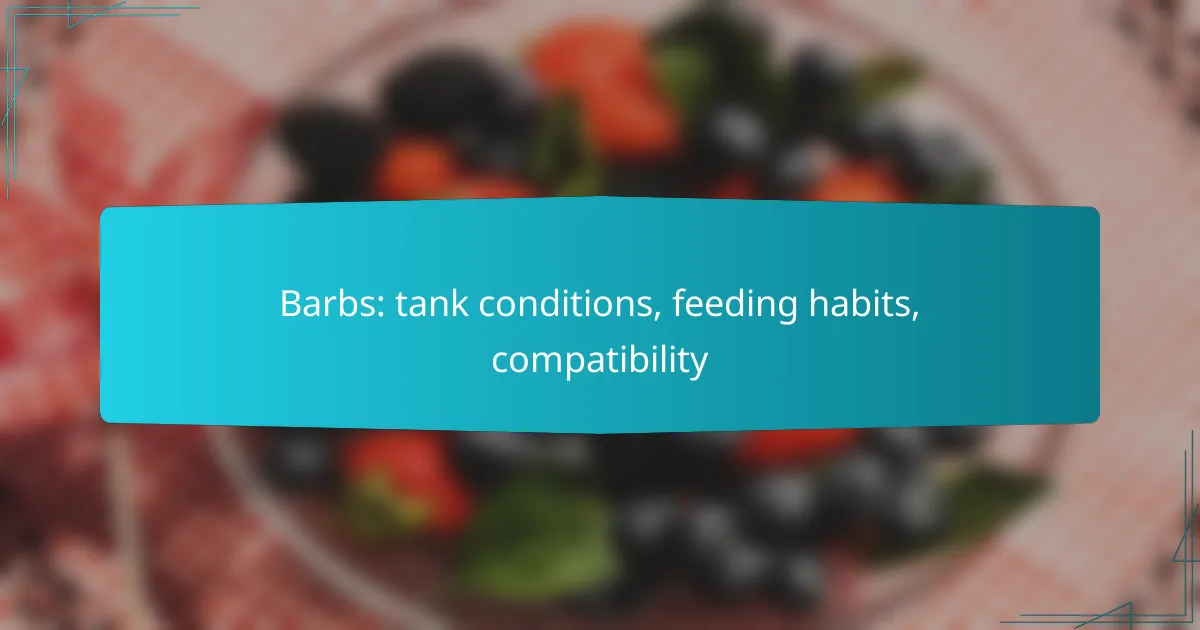Corydoras Catfish thrive in aquariums with soft substrates like fine sand, which protects their sensitive barbels while allowing natural foraging behaviors. They are social creatures that prefer peaceful tank mates, making it important to choose compatible species that share similar water conditions. A balanced diet of high-quality sinking pellets, along with occasional live or frozen foods, is crucial for their health and vitality.

What substrate is best for Corydoras Catfish in home aquariums?
The best substrate for Corydoras Catfish in home aquariums is one that is soft and gentle on their sensitive barbels. Fine sand is often recommended, as it allows these fish to forage naturally without injury. However, other substrates can also be suitable if they meet specific criteria.
Fine sand substrate
Fine sand is ideal for Corydoras Catfish because it mimics their natural habitat and prevents damage to their delicate barbels. It allows them to sift through the substrate while searching for food, which is a natural behavior. When choosing sand, opt for a grain size that is small enough to be easily moved but not so fine that it clogs filters.
Gravel substrate
Gravel can be used for Corydoras, but it should be smooth and rounded to avoid harming their barbels. A substrate with larger gravel pieces may not be as comfortable for these fish, as they prefer to dig and forage. If gravel is chosen, ensure it is of a size that they can easily navigate without injury.
Plant substrate
Plant substrates, often rich in nutrients, can support aquatic plants while providing a suitable environment for Corydoras. However, they may not be as gentle as sand. If using a plant substrate, ensure it is not too coarse and monitor the water parameters closely, as nutrient leaching can affect water quality.
Substrate with smooth edges
Regardless of the type of substrate, it is crucial that it has smooth edges to prevent injury to Corydoras Catfish. Substrates with sharp or jagged edges can lead to abrasions and infections. Always inspect the substrate before adding it to the aquarium to ensure it is safe for these bottom-dwelling fish.
Benefits of natural substrates
Natural substrates, such as sand or fine gravel, offer several benefits for Corydoras Catfish. They promote natural behaviors like foraging and digging, which can reduce stress and improve overall health. Additionally, natural substrates can help maintain stable water parameters and provide beneficial bacteria that aid in biological filtration.

What are the ideal tank mates for Corydoras Catfish?
The ideal tank mates for Corydoras Catfish are peaceful species that thrive in similar water conditions. These catfish are social and prefer to be in groups, so selecting compatible fish enhances their well-being and reduces stress.
Peaceful community fish
When choosing peaceful community fish, consider species like guppies, tetras, and platies. These fish are generally non-aggressive and share similar water requirements, making them suitable companions for Corydoras. Ensure that the tank is spacious enough to accommodate the swimming needs of all species.
Small schooling fish
Small schooling fish such as neon tetras, rasboras, and danios make excellent tank mates for Corydoras Catfish. They prefer to swim in groups, which complements the social nature of Corydoras. Aim for a school of at least six to eight individuals to promote a sense of security and activity in the tank.
Other bottom dwellers
Other bottom dwellers like certain species of loaches can coexist with Corydoras, provided they are not overly territorial. Choose smaller loaches that are known for their peaceful behavior, such as the kuhli loach. Monitor their interactions to ensure a harmonious environment, as some bottom dwellers can be more aggressive than others.
Fish to avoid
Avoid keeping Corydoras with aggressive or fin-nipping species like cichlids or bettas. These fish can stress or harm the catfish, leading to health issues. Additionally, large predatory fish should be excluded, as they may see Corydoras as potential prey. Always research potential tank mates to ensure compatibility before introducing them to your aquarium.

How should Corydoras Catfish be fed?
Corydoras Catfish should be fed a balanced diet that includes high-quality sinking pellets and occasional live or frozen foods. Proper feeding habits are essential for their health and well-being.
High-quality sinking pellets
High-quality sinking pellets are a staple in the diet of Corydoras Catfish. These pellets are designed to sink to the bottom of the tank, where these catfish naturally forage. Look for pellets that are high in protein and specifically formulated for bottom feeders.
When selecting pellets, check the ingredient list for whole fish or shrimp as primary components. Avoid products with excessive fillers, as these can lead to poor health and water quality issues.
Frozen or live food options
In addition to pellets, Corydoras Catfish benefit from occasional frozen or live food options such as bloodworms, brine shrimp, or daphnia. These foods provide essential nutrients and stimulate natural hunting behaviors.
Introduce these foods sparingly, as they can spoil quickly and lead to water quality problems if uneaten. A good practice is to offer live or frozen foods once or twice a week as a treat.
Frequency of feeding
Corydoras Catfish should be fed small amounts 1-2 times a day. This frequency helps prevent overfeeding, which can lead to health issues and poor water quality. Monitor their eating habits to ensure they consume the food within a few minutes.
Adjust the feeding schedule based on the size of the fish and the tank’s overall ecosystem. Younger or more active fish may require more frequent feedings compared to adults.
Feeding tips for health
To maintain the health of your Corydoras Catfish, avoid overfeeding and ensure a varied diet. Regularly check the water quality, as uneaten food can degrade the environment. Use a siphon to remove any leftover food after feeding.
Consider using a feeding dish to help keep the food in one area, making it easier for the catfish to find and consume. This practice can also minimize waste and help maintain tank cleanliness.
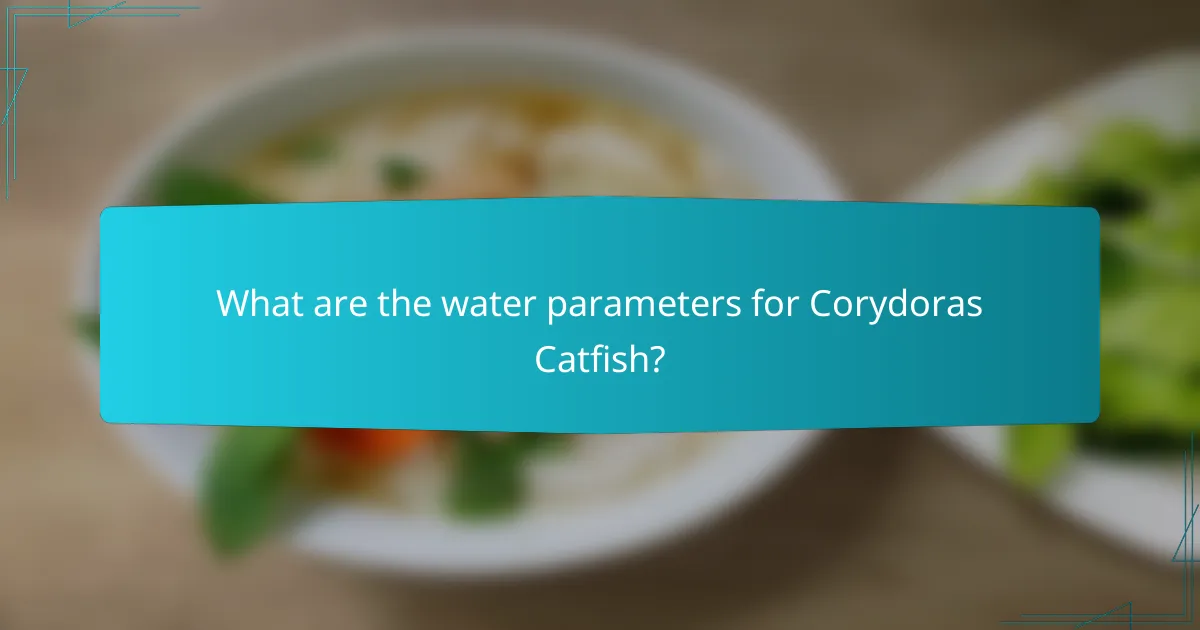
What are the water parameters for Corydoras Catfish?
Corydoras Catfish thrive in specific water parameters that ensure their health and well-being. Maintaining the right temperature, pH level, and water hardness is crucial for their optimal growth and behavior.
Optimal temperature range
The ideal temperature range for Corydoras Catfish is typically between 22°C and 28°C (72°F to 82°F). Keeping the water within this range promotes active behavior and enhances their immune system. Sudden temperature fluctuations can stress the fish, so it’s best to use a reliable heater and thermometer.
pH level requirements
Corydoras Catfish prefer a pH level between 6.0 and 7.5. This slightly acidic to neutral range mimics their natural habitat in South America. Regular testing of the water pH is essential, as drastic changes can lead to health issues.
Water hardness preferences
These catfish thrive in soft to moderately hard water, ideally with a hardness of 2 to 15 dGH. Soft water is preferable, as it closely resembles their native environments. Using a water conditioner can help achieve the desired hardness, especially in areas with hard tap water.

How do Corydoras Catfish behave in a community tank?
Corydoras Catfish are generally peaceful and social fish that thrive in community tanks. They exhibit schooling behavior, preferring to be in groups of at least five, which helps reduce stress and encourages natural behaviors.
Substrate choice for Corydoras Catfish
Corydoras Catfish prefer soft substrates such as sand or fine gravel, which allow them to forage comfortably without injuring their delicate barbels. A substrate that is too rough can lead to health issues over time.
When selecting substrate, consider a depth of around 2-3 inches to provide enough space for burrowing. Avoid sharp-edged materials, as they can harm the fish when they dig or sift through the substrate.
Tank mates for Corydoras Catfish
Corydoras Catfish are compatible with a variety of peaceful fish species, making them ideal for community tanks. Suitable tank mates include tetras, rasboras, and guppies, as these species share similar water requirements and temperaments.
Avoid aggressive or territorial fish, such as cichlids or larger species, which can stress or harm the Corydoras. Always ensure that the tank is spacious enough to accommodate all species comfortably, ideally with a minimum of 20 gallons for a small community setup.
Feeding habits of Corydoras Catfish
Corydoras Catfish are omnivorous scavengers that thrive on a varied diet. They enjoy sinking pellets, flakes, and frozen or live foods like bloodworms and brine shrimp, which provide essential nutrients.
Feed them small amounts 2-3 times a day, ensuring that all food is consumed within a few minutes to maintain water quality. Supplementing their diet with occasional vegetable matter, such as blanched zucchini or peas, can also be beneficial for their health.



